Talking SOP April 2005 [PDF, 460.23 Kb] - Tessenderlo Group
Talking SOP April 2005 [PDF, 460.23 Kb] - Tessenderlo Group
Talking SOP April 2005 [PDF, 460.23 Kb] - Tessenderlo Group
Create successful ePaper yourself
Turn your PDF publications into a flip-book with our unique Google optimized e-Paper software.
Sulphate of Potash newsf from <strong>Tessenderlo</strong> <strong>Group</strong><br />
A p r i l 2 0 0 5<br />
Production of new quality<br />
SoluPotasse ® starts at Ham<br />
In this issue<br />
Production of <strong>Tessenderlo</strong> <strong>Group</strong>’s enhanced quality SoluPotasse ® started<br />
as planned at its Ham factory in Belgium at the end of December.<br />
The new unit brings the production capacity of<br />
SoluPotasse ® to around 150,000 tons per year.<br />
While the chemical properties of the new product<br />
are unchanged, its physical properties have been<br />
improved: a modification to the particle size<br />
distribution has substantially reduced the levels of<br />
dust that historically made the product difficult to<br />
handle in bulk.<br />
fully packed. This is simply an effect of the lower<br />
bulk density.<br />
Easier to handle<br />
Customers will also notice that the new<br />
SoluPotasse ® is easier to handle, thanks to the<br />
reduced dust levels. Indeed, initial feedback from<br />
those receiving the new product has been very<br />
positive.<br />
Potassium sulphate produces<br />
more tropical fruit with better<br />
quality p2<br />
<strong>Tessenderlo</strong> <strong>Group</strong> starts<br />
<strong>SOP</strong> production in northern<br />
France p4<br />
fertigation and foliar application for a wide variety<br />
of crops.<br />
Customers have started to receive the new<br />
SoluPotasse ® , as existing stocks of the old product<br />
have been used up. Since the new product has a<br />
slightly lower bulk density than the old one,<br />
customers receiving SoluPotasse ® in bagged<br />
form will notice that the bags appear to be more<br />
To support its introduction, <strong>Tessenderlo</strong> <strong>Group</strong><br />
has updated the SoluPotasse ® users’ guide, first<br />
produced in the mid-1990’s for the launch of the<br />
original product. The 12-page guide contains full<br />
details of the characteristics of SoluPotasse ®<br />
along with recommendations for its use in<br />
Those interested can obtain a copy either from<br />
their <strong>Tessenderlo</strong> <strong>Group</strong> representative or by<br />
e-mailing fertilizers@tessenderlo.com. Further<br />
information on SoluPotasse ® can also be found<br />
at the group’s website:<br />
www.tessenderlogroup.com ■<br />
IPI welcomes delegates to Morocco<br />
Rabat in Morocco played host last November to delegates at the latest regional<br />
workshop organized jointly by the Institut Agronomique et Veterinaire Hassan II (IAV)<br />
and the International Potash Institute (IPI).<br />
“The West Asia and North Africa (WANA) region is<br />
a particularly arid area and, as the population<br />
continues to increase, more food will be required.<br />
But, at the same time, less water will be available<br />
for agricultural use,” stated Michel Marchand,<br />
<strong>Tessenderlo</strong> <strong>Group</strong>’s representative within the IPI<br />
and coordinator for the WANA region.<br />
“The only way to address this issue is to combine<br />
efficient use of both fertilizers and water through<br />
the use of drip irrigation and, for this reason, the<br />
focus of the workshop was on the latest trends in<br />
the use of potassium in fertigation.”<br />
“The level of the underground water in Morocco is<br />
dropping slowly but surely,” explained Professor<br />
Badraoui of the IAV, joint organizer of the event<br />
with Mr Marchand.<br />
“The government has recognized the important<br />
role fertigation has to play in sustainable<br />
agriculture and now offers subsidies to growers<br />
wishing to invest in drip irrigation systems.”<br />
Over the course of the 4-day event, some 70<br />
delegates from 15 countries in the WANA region<br />
heard presentations on a wide range of topics<br />
related to fertigation.<br />
They also participated in a visit to the Domaines<br />
Royaux in Douiet, close to Fès, and to the fruit<br />
tree area of Meknès.<br />
Proceedings of the workshop will be available in<br />
due course on the IPI website www.ipipotash.org<br />
which also contains further information on the<br />
activities of the institute. ■<br />
SoluPotasse ® GranuPotasse ® Standard <strong>SOP</strong> Low-chloride <strong>SOP</strong>
Potassium sulphate produces more tropical fruit<br />
with better quality<br />
Tropical fruit is becoming increasingly popular in temperate countries as a result of the search for new tastes or<br />
for souvenirs of exotic adventure. Some tropical fruits, such as banana or pineapple, have been well known for a<br />
long time and cropping techniques and fertilization are well controlled. But this is not always the case.<br />
Most tropical species are characterized by fast<br />
growth, resulting in short periods with high<br />
nutritional requirements. In addition, tropical fruits<br />
are frequently grown in poor soil conditions.<br />
Fertilization must take into account these two<br />
constraints and potash fertilization, as well as the<br />
complete fertilization programme, needs to be<br />
based on soil and plant analysis, according to<br />
target yields.<br />
fruit is a high potash<br />
requirement. Balanced<br />
fertilization is a<br />
prerequisite to ensure<br />
root growth and full<br />
development of the<br />
plant. Table 1 presents<br />
the mineral requirements<br />
for some tropical<br />
fruits during the fruit<br />
production stage.<br />
Pineapple: a popular tropical fruit.<br />
The most popular tropical fruits are banana,<br />
mango and pineapple, covering respectively<br />
4.5 million, 3.6 million and 0.85 million hectares<br />
worldwide. Among other species are dragon fruit,<br />
durian, guava, jackfruit, longan, langsat,<br />
mangostan, passion fruit, papaya, rambutan,<br />
sapodilla, and star fruit.<br />
Although these crops can be very different, the<br />
common characteristic for producing marketable<br />
Guava<br />
Guava comes from<br />
Central America and is<br />
now grown in many<br />
tropical and subtropical<br />
areas of the world. It is<br />
a fruit tree with a short<br />
life cycle. Production starts between 10 and 12<br />
months after plantation, with the period of<br />
maximum productivity when the tree is three to<br />
four years old.<br />
Guava can be cropped in many soils, except<br />
those with high clay content, low drainage<br />
capacity or salinity.<br />
Papaya<br />
Papaya is mostly cropped in Brazil, India, Mexico<br />
and Nigeria, with Mexico being the most<br />
important papaya exporter in the world.<br />
SoluPotasse ® is widely used in modern papaya<br />
production and a standard fertigation programme<br />
using the product is presented in Table 2 below.<br />
Tropical fruit: reminders of exotic adventure.<br />
Longan.<br />
Table 1 N P 2 O 5 K 2 O<br />
g per tree per year<br />
Durian 800 400 600<br />
Dragon fruit 540 420 500<br />
Guava 60 60 85<br />
Longan 400 180 400<br />
Mangostan 1200 600 1200<br />
Papaya 45 45 60<br />
Passion fruit 135 30 150<br />
Rambutan 420 420 600<br />
Sapodilla 420 420 600<br />
Star fruit 600 600 850<br />
Table 2<br />
Planting density from 2000 to 2500 plants/ha<br />
Urea MAP SoluPotasse ® Mg Sulphate Split into<br />
kg/ha kg/ha kg/ha kg/ha (applications)<br />
Planting - 10 - - -<br />
1st month 55 20 40 - 2 - 3<br />
2nd month 85 40 80 - 3 - 4<br />
3rd month 140 80 120 - 4 - 5<br />
4th month - 100 200 - 5 - 6<br />
From flower initiation to fruit setting<br />
Every month 75 65 135 60 5 - 6 per month<br />
SoluPotasse ® GranuPotasse ® Standard <strong>SOP</strong> Low-chloride <strong>SOP</strong>
Dragon fruit<br />
Dragon fruit is not popular in western countries,<br />
but is much appreciated in the Far East, especially<br />
for feasts. It looks strange, as well as having an<br />
unusual name. The origin of the plant is in South<br />
America, but it is now widely cropped in South<br />
East Asia.<br />
Photoperiod control allows production of fruit<br />
throughout the year. Potassium sulphate improves<br />
dragon fruit’s sugar content and consequently its<br />
taste (Table 3).<br />
Dragon fruit.<br />
Table 3 K 2 O K fertilizer Yield (kg/tree) Brix Taste<br />
g/tree/year 2001 2002 degree<br />
T1 (control) 120 KCl 10.17 10.13 16.05 +<br />
T2 200 K 2 SO 4 11.98 11.49 16.12 ++<br />
T3 400 K 2 SO 4 13.32 12.94 17.07 +++<br />
T4 600 K 2 SO 4 14.26 14.19 17.78 ++++<br />
T5 400 KCl 12.98 12.56 16.88 ++<br />
Durian tree.<br />
Durian<br />
Durian is a fruit with a very strong smell, which<br />
explains why it is forbidden in some five star<br />
hotels! However, it is a very popular fruit, much<br />
appreciated in Asia.<br />
Longan<br />
Longan, also called dragon’s eye, originates from<br />
Burma and the south China border area. The fruit,<br />
similar to lichee but tasting sweeter, is cropped<br />
mostly in the tropical part of South East Asia. It is<br />
a cash crop, exported either as fresh fruit or dried.<br />
Potassium sulphate improves its yield and sugar<br />
content, as well as the edible part of the fruit<br />
(Table 4).<br />
Table 5 K 2 O K fertilizer Yield (kg/tree) Fruit flesh Taste<br />
g/tree/year 2001 2002 ratio<br />
T1 (control) 200 KCl 237.23 281.83 19.05 +<br />
T2 750 K 2 SO 4 288.24 342.27 19.79 ++<br />
T3 1050 K 2 SO 4 343.16 343.98 22.50 +++<br />
T4 1350 K 2 SO 4 308.19 354.32 22.72 ++++<br />
T5 1050 KCl 283.37 310.84 21.97 +<br />
Table 4 K 2 O K fertilizer Yield (kg/tree) Brix Taste<br />
g/tree/year 2001 2002 degree<br />
T1 (control) - - 32.5 32.9 18.75 +<br />
T2 300 K 2 SO 4 37.3 40.2 19.40 +<br />
T3 500 K 2 SO 4 41.5 44.1 20.71 ++<br />
T4 700 K 2 SO 4 51.3 54.1 21.75 +++<br />
T5 500 KCl 36.5 40.5 20.02 +<br />
All lovers of durian enjoy the taste of its flesh,<br />
which is enhanced by applying potassium sulphate,<br />
in addition to the fertilizer’s effect on fruit<br />
production (Table 5).<br />
Sulphate of potash: a key role<br />
New research into potash fertilization shows the<br />
key role of potassium sulphate in producing sweet<br />
and tasty fruit with good conservation properties.<br />
As shown in the tables above, potassium is an<br />
important element for most types of fruit<br />
produced in the world. The figures illustrate<br />
research recently undertaken in cooperation with<br />
the main institutes involved in tropical fruit<br />
development.<br />
It is evident that the potential growth of “new”<br />
tropical fruits on the world market is important.<br />
Using sulphate of potash to produce these<br />
provides a guarantee of greater fruit production<br />
and better fruit quality. ■<br />
Sapodilla.<br />
Star fruit.<br />
Dragon fruit.<br />
SoluPotasse ® GranuPotasse ® Standard <strong>SOP</strong> Low-chloride <strong>SOP</strong>
<strong>Tessenderlo</strong> <strong>Group</strong> starts <strong>SOP</strong> production<br />
in northern France<br />
With global demand for sulphate of potash (<strong>SOP</strong>) still strong despite recent<br />
price increases, <strong>Tessenderlo</strong> <strong>Group</strong> has now started production at a third<br />
factory, ‘Produits Chimiques de Loos’, located in the northern part of<br />
France close to the town of Lille.<br />
A significant part of the <strong>SOP</strong> currently produced<br />
by PC Loos is in granular form, marketed as<br />
GranuPotasse ® , since this part of France is also<br />
an important market for <strong>SOP</strong>, particularly for the<br />
local potato crop.<br />
Growers throughout the world now recognise the<br />
benefits <strong>SOP</strong> can bring to high value cash crops<br />
such as fruit and vegetables, Consequently,<br />
demand for the product in the first few months of<br />
<strong>2005</strong> has been so high that many manufacturers<br />
have been operating at full capacity.<br />
‘Produits Chimiques de Loos’ plant.<br />
<strong>Tessenderlo</strong> <strong>Group</strong> previously had just two<br />
factories producing <strong>SOP</strong> in Belgium. The two<br />
units are situated in the eastern part of the<br />
country: the first at Ham, adjoining the Albert<br />
canal, and the second in the town of <strong>Tessenderlo</strong>.<br />
Modifications to the group’s plant in northern<br />
France, operated by its French subsidiary<br />
‘Produits Chimiques de Loos’ (PC Loos), now<br />
allow this unit to produce up to 100,000 tonnes of<br />
<strong>SOP</strong> per year.<br />
Which products are produced at PC<br />
Loos?<br />
The plant at Loos is part of <strong>Tessenderlo</strong> <strong>Group</strong>’s<br />
Inorganic Chemicals Division. It produces mineral<br />
chlorides (ferric, zinc and aluminium) for a variety<br />
of industrials applications, including water<br />
treatment and batteries.<br />
The site is also equipped with an electrolysis unit,<br />
which produces caustic potash and potash flakes<br />
for a variety of applications, including detergents,<br />
as well as up to 18,000 tonnes of chlorine for<br />
internal use within the group.<br />
The plant also possesses six Mannheim furnaces,<br />
which were previously used to produce sodium<br />
sulphate for the detergent and pulp and paper<br />
industries, among others. This production has<br />
now been transferred to the group’s <strong>Tessenderlo</strong><br />
factory and modification of the furnaces now<br />
allows production of <strong>SOP</strong>.<br />
What grades of <strong>SOP</strong> are currently being<br />
produced there?<br />
The Mannheim furnaces at PC Loos operate in an<br />
identical manner to those at the group’s two other<br />
<strong>SOP</strong> units in Belgium. Potassium chloride and<br />
sulphuric acid are combined in the furnace at a<br />
temperature of around 800°C to produce <strong>SOP</strong><br />
and hydrochloric acid.<br />
Production of <strong>SOP</strong> at the plant started in October<br />
2004 and it can produce both powder and<br />
granular grades of <strong>SOP</strong>. The physical and<br />
chemical characteristics of the products<br />
produced there are very similar to those of the<br />
<strong>SOP</strong> produced in the Belgian factories, but<br />
separate specification sheets are available.<br />
One of the plant’s Mannheim furnaces.<br />
What are the advantages of producing<br />
<strong>SOP</strong> at PC Loos?<br />
The factory is strategically located in the town of<br />
Loos, close to the city of Lille, and enjoys a direct<br />
link via canal to the ports of Ghent, Dunkirk and<br />
Antwerp. From here, the <strong>SOP</strong> can be shipped<br />
efficiently to important markets in the<br />
Mediterranean basin, both in Southern Europe<br />
and North Africa.<br />
Inside the furnace.<br />
The plant is also ideally located to serve the<br />
needs of important NPK producers who also have<br />
facilities in the north of France.<br />
What is the outlook for the world <strong>SOP</strong><br />
market in <strong>2005</strong>?<br />
Current market conditions remain difficult for <strong>SOP</strong><br />
producers and exporters, particularly those<br />
located in Europe. The US dollar looks set to<br />
remain weak against the Euro, having spent only<br />
some two weeks in the first quarter of <strong>2005</strong> below<br />
the 1.3 level.<br />
While the freight market seems to have calmed<br />
down slightly, rates still remain high and in the first<br />
part of the year there have been no signs that<br />
they will fall significantly in the near future.<br />
Reports suggest that demand for MOP (the raw<br />
material for the manufacture of <strong>Tessenderlo</strong><br />
<strong>Group</strong>’s <strong>SOP</strong>) remains strong and that MOP<br />
manufacturers will be looking to achieve further<br />
price increases during <strong>2005</strong>. Such markets<br />
conditions will inevitably lead to a further increase<br />
in the price of <strong>SOP</strong>, especially in the US dollar<br />
zone.<br />
Despite this, the demand for <strong>SOP</strong> also looks set<br />
to remain strong in the second quarter of the year<br />
and <strong>Tessenderlo</strong> <strong>Group</strong> expects to be making full<br />
use of all three of its <strong>SOP</strong> production units.<br />
For more information on <strong>Tessenderlo</strong> <strong>Group</strong>’s<br />
activities visit: www.tessenderlogroup.com ■<br />
<strong>Tessenderlo</strong> <strong>Group</strong> Fertilizers<br />
giving nature a helping hand<br />
www.sopib.com<br />
<strong>Tessenderlo</strong> <strong>Group</strong><br />
Troonstraat 130, B-1050 Brussels, Belgium<br />
Tel: +32 2 639 1811 Fax: +32 2 639 1940<br />
www.tessenderlogroup.com<br />
fertilizers@tessenderlo.com<br />
SoluPotasse ® and GranuPotasse ® are registered trademarks of <strong>Tessenderlo</strong> <strong>Group</strong>.


![Talking SOP April 2005 [PDF, 460.23 Kb] - Tessenderlo Group](https://img.yumpu.com/37691472/1/500x640/talking-sop-april-2005-pdf-46023-kb-tessenderlo-group.jpg)
![Slides [PDF, 378.59 Kb] - Tessenderlo Group](https://img.yumpu.com/49205668/1/190x143/slides-pdf-37859-kb-tessenderlo-group.jpg?quality=85)
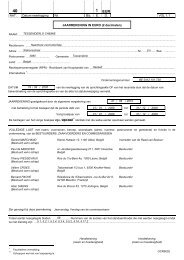
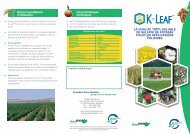
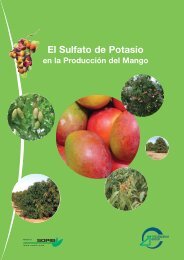
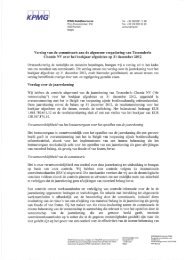

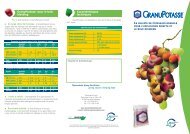
![Investor Seminar Presentation [PDF, 997.72 Kb] - Tessenderlo Group](https://img.yumpu.com/45992427/1/190x143/investor-seminar-presentation-pdf-99772-kb-tessenderlo-group.jpg?quality=85)
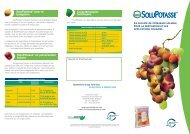
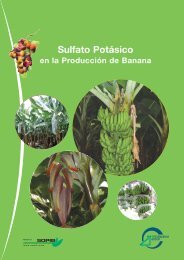
![Talking SOP May 2013 [PDF, 735.49 Kb] - Tessenderlo Group](https://img.yumpu.com/41045284/1/184x260/talking-sop-may-2013-pdf-73549-kb-tessenderlo-group.jpg?quality=85)
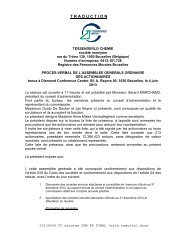

![Talking SOP September 2012 [PDF, 673.84 Kb] - Tessenderlo Group](https://img.yumpu.com/37691694/1/184x260/talking-sop-september-2012-pdf-67384-kb-tessenderlo-group.jpg?quality=85)
![Annual Report 2008 English [PDF, 2.69 MB] - Tessenderlo Group](https://img.yumpu.com/37691533/1/184x260/annual-report-2008-english-pdf-269-mb-tessenderlo-group.jpg?quality=85)